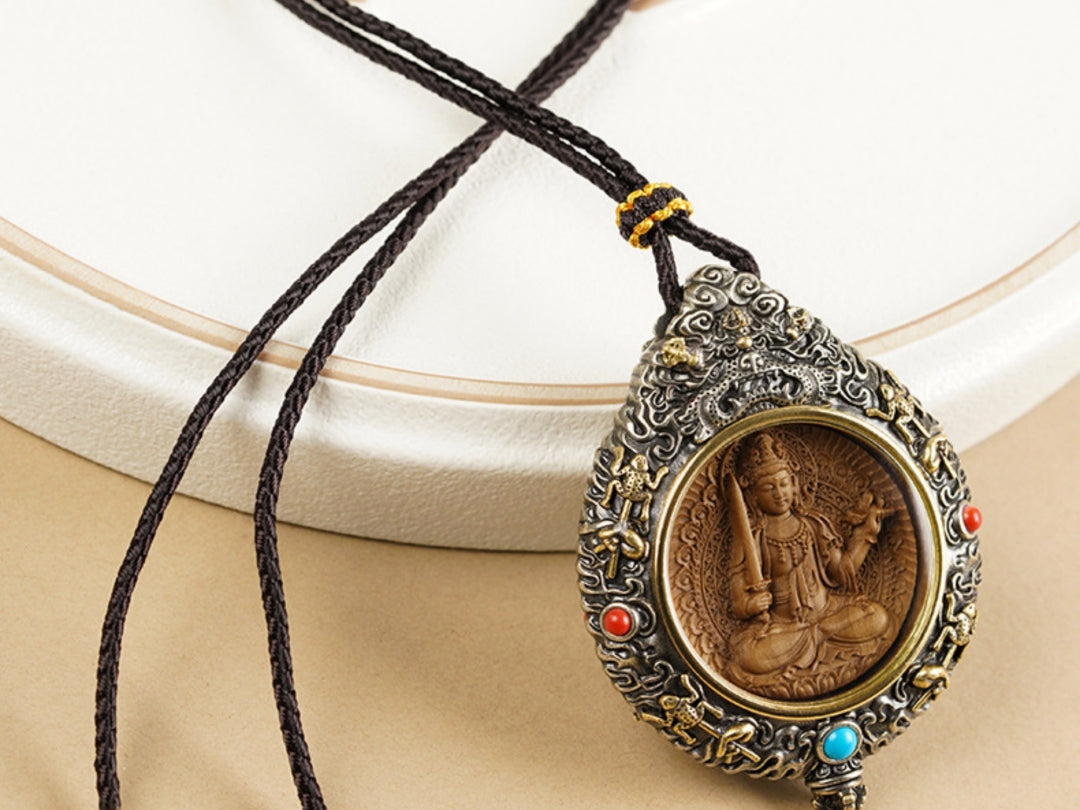Symbols have always carried a quiet power—an ability to speak directly to the heart without using a single word. In Eastern traditions, sacred motifs developed over thousands of years to guide, protect, and inspire. Today, many people still turn to these symbols not only for their beauty, but for the sense of grounding and clarity they bring into everyday life.
In modern spiritual communities, there is a renewed appreciation for spiritual symbolism—especially as people search for practices that bring meaning, calm, and intention into their daily routines. Whether worn as jewelry, displayed at home, or kept as a simple reminder during meditation, symbols offer a gentle way to stay connected to one’s inner world.

Lotus: Rising Above and Returning to Clarity
The lotus is one of the most recognized sacred motifs in Eastern culture. Growing from muddy waters yet blooming in pristine beauty, it represents purity, resilience, and spiritual awakening.
Traditionally, monks and practitioners used the lotus as a reminder that clarity is always possible, no matter how chaotic life becomes. For many people today, the lotus serves as a symbol of personal growth—an encouragement to stay centered and rise above challenges with grace.
Mandala (Sacred Mandala): A Blueprint for Inner Harmony
Mandala patterns, often found in temples and ancient art, represent the structure of the universe. They reflect balance, wholeness, and the interconnected nature of all things.
In ancient rituals, mandalas helped practitioners focus their minds, understand cosmic order, and cultivate deeper awareness. When used in modern life—whether through meditation or as a symbolic ornament—the mandala offers a sense of stability and alignment within one’s spiritual journey.
The Six-Syllable Mantra: A Path to Compassion and Protection
The mantra Om Mani Padme Hum is one of the most meaningful cultural symbols in Tibetan Buddhism. Each syllable carries a specific vibration meant to purify the mind and cultivate compassion.
Historically, mantras were inscribed on prayer wheels, stones, and sacred objects to create a field of protection for those who encountered them. Today, people often connect with this mantra for emotional grounding, peace, and spiritual clarity. It serves as a reminder to move through life with kindness and intention.
Vajra: Unbreakable Strength and Insight
The vajra—sometimes referred to as the “thunderbolt”—is a symbol of indestructible truth and unwavering wisdom. In rituals, it represented the ability to cut through illusion and overcome negativity.
For many modern spiritual seekers, the vajra embodies inner resilience. It speaks to the strength that remains steady even during periods of uncertainty. As a protective symbol, it often inspires courage and insight in moments when clarity is needed most.
The Wisdom Eye: Seeing Beyond the Surface
Often called the “Eye of Wisdom” or “Third Eye,” this symbol represents heightened awareness and the ability to perceive truth beyond ordinary sight. In ancient cultures, it was used to guide practitioners toward intuition and deeper understanding.
In contemporary life, the Wisdom Eye holds special meaning for those seeking mindfulness, presence, and spiritual balance. It encourages paying attention—not just to the external world, but to the quiet signals within.
Why These Symbols Still Matter Today
While the world has changed dramatically from the time these symbols first emerged, the human heart has not. People still look for reassurance, guidance, and grounding. Many find comfort in cultural symbols meaning that reflect universal human experiences—hope, protection, growth, insight.
Wearing or carrying a sacred symbol is not about superstition; it’s about creating a personal connection to something that uplifts the spirit. These symbols offer:
-
A moment of mindfulness
-
A sense of purpose or direction
-
Emotional stability during life transitions
-
A reminder of resilience, compassion, or inner clarity
They represent a gentle way to stay rooted, no matter how quickly life moves.
A Quiet Invitation to Live with Intention
Sacred motifs invite us to slow down, reconnect, and bring more meaning into the everyday. They remind us that spirituality isn’t something separate from daily life—it lives within the choices we make, the energy we carry, and the symbols we keep close.
Whether drawn to the lotus’ purity, the mandala’s harmony, or the mantra’s compassion, each symbol offers its own path. The beauty lies in choosing the one that speaks to your heart.







